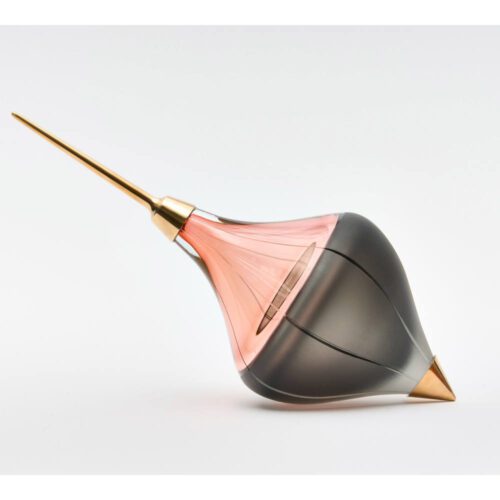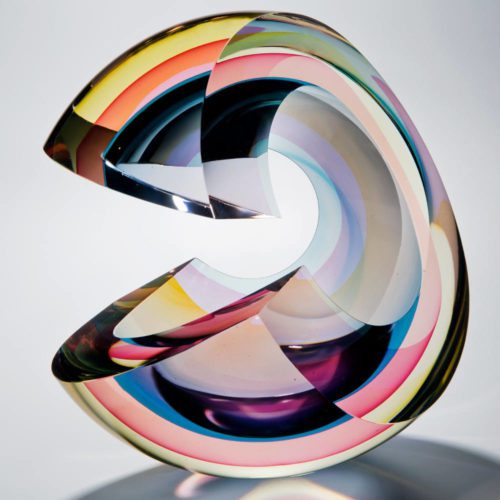
There are many glass art techniques that glass artists use to create amazing art glass pieces.
These different techniques can be put into three main categories: hot glass, warm glass, and, yes, you guessed it, cold glass.
Hot glass making requires a temperature of 2000 degrees, and the viscous, easily manipulated glass is used in glass blowing and for making sculpted and cast glass.
Warm glass refers to glass artwork that is warmed up in a kiln to enable the glass artisan to manipulate its form.
Finally, glass can also be cold-worked. This is where the surface of the glass is modified by the use of tools or chemicals.
Let’s now delve into the techniques that glass artists use to create their objet d’art.
Blown Glass: The Breath of Life
One of the most iconic and ancient glass art techniques is glass blowing. This method involves shaping molten glass by blowing air through a pipe. The artist gathers a molten blob of glass on the end of a blowpipe, then inflates and shapes it using tools and gravity.
This technique allows for the creation of a vast array of forms, from delicate ornaments to intricate sculptures. Renowned glass blowers can manipulate the glass with incredible precision, producing pieces that seem almost weightless despite their size.
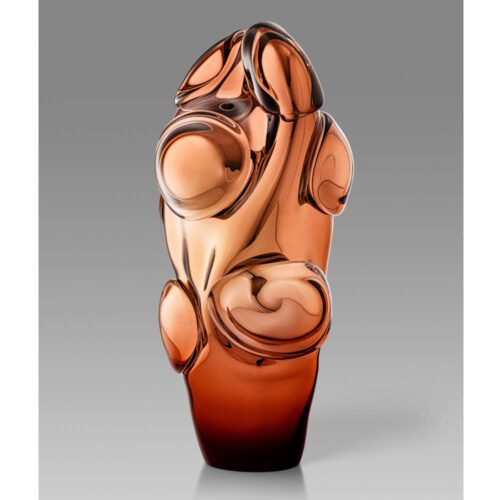
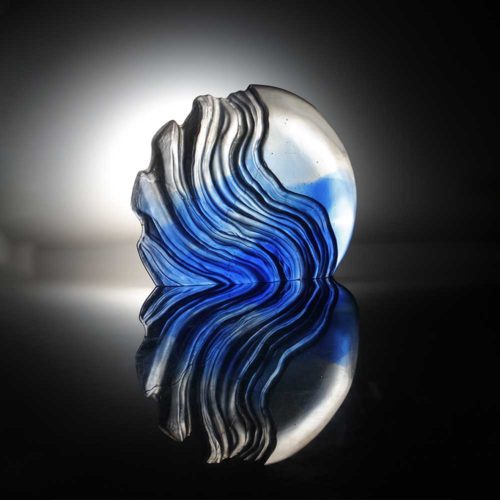
Kilnforming: Sculpting with Heat
In kilnforming, there are three main techniques: glass fusing, glass slumping, and kiln casting.
Fused glass is a technique that involves heating multiple pieces of glass until they bond together. This process allows artists to create intricate patterns and designs by layering different coloured or textured glass sheets. The fused glass is then re-heated to achieve a seamless integration of the individual glass pieces.
The result is a vibrant and textured surface that can be further shaped or cut into various forms. Fused glass is popular for creating jewellery, wall art, and functional items like glass wall art, glass platters and glass bowls.
Glass slumping utilises the power of heat combined with gravity to make art glass. A sheet of glass is put into a kiln and heated until it slumps down into the mould inside the kiln. Once it has filled or enveloped the mould, it is slowly cooled (annealed) until the glass becomes solid again. This technique is often used to create platters and bowls as well as glass wall art.
The moulds can be made of ceramic, sand, or metal and have a release agent to ensure the glass can be lifted off the mould.
In Kiln casting, artists use moulds to shape molten glass. The process begins with creating a mould, typically made of plaster or refractory materials. The mould is filled with chunks of glass and then heated in a kiln until the glass melts and takes the shape of the mould. This technique allows for the creation of intricate and three-dimensional sculptures. Artists can experiment with various moulds to achieve different textures and forms, making kiln casting a versatile and expressive method in glass artistry.
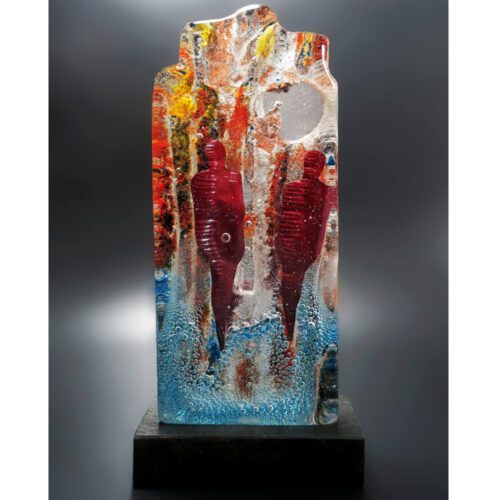
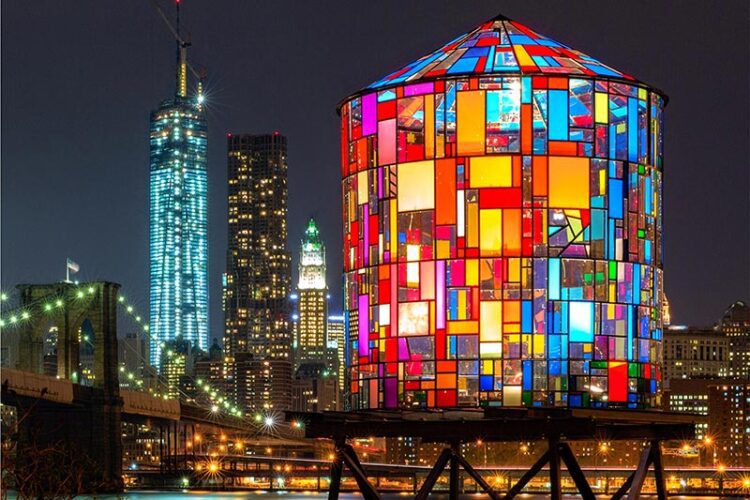
Stained Glass: Illuminating Narratives in Colour
Stained glass has a rich history dating back to mediaeval times when it adorned the grand cathedrals of Europe. This technique involves assembling pieces of coloured glass, traditionally held together by lead strips, to form a larger design.
The use of different colours and thicknesses of glass allows artists to manipulate the transmission of light, creating a mesmerising interplay of colours and shadows. Stained glass has found its way into contemporary art and is often used in windows, lampshades, and intricate panels, telling stories through their vibrant hues.
Lampworking: Precision in Miniature
Lampworking, also known as flameworking or torchworking, is a technique where artists use a gas-fuelled torch to melt and shape glass rods or tubes. This method is ideal for creating small, intricate pieces such as beads, figurines, and detailed sculptures.
Lampworking allows for precise control over the glass, and artists often employ a variety of tools to shape and manipulate the material as it becomes pliable. The delicate and detailed nature of lampworked glass makes it a favourite among artists who revel in the minutiae of their craft.
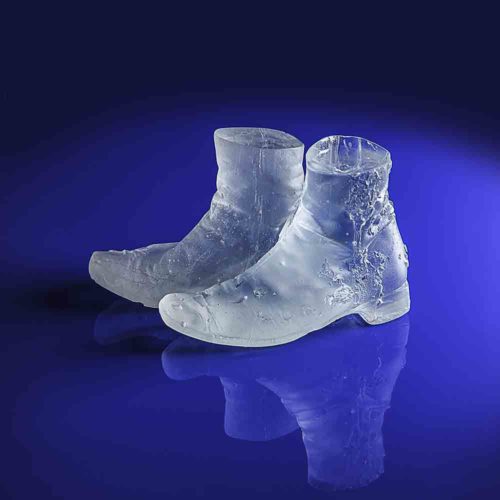
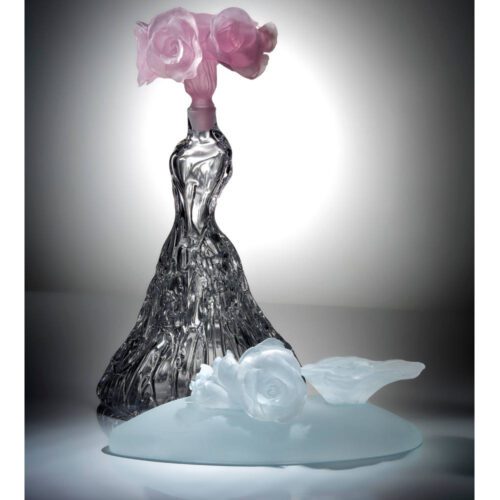
Pâte de Verre: Sculpting with Glass Paste
Pâte de verre, translated from French as “paste of glass,” is a technique where finely ground glass is mixed with a binding agent to create a paste. This paste is then carefully packed into a mould and fired in a kiln. The firing process evaporates the binding agent, leaving behind a translucent glass sculpture with intricate details. Pâte de verre allows artists to achieve a level of detail and delicacy that is hard to replicate with other techniques. The resulting pieces often have an ethereal quality, resembling delicate candies or frosted gems.
Sand Casting: Nature’s Hand in Glass Form
Sand casting is a method that draws inspiration from the organic shapes found in nature. Artists create a mould by pressing an object into the sand, leaving a cavity that is then filled with molten glass. As the glass cools and solidifies, it takes on the shape of the mould. The sand casting technique often results in unique and irregular forms, capturing the essence of natural textures and shapes. This method is prized for its ability to create one-of-a-kind pieces that celebrate the unpredictability of the creative process.
Cold Working Techniques
Cold working is a series of techniques applied to glass after it has been formed and cooled. This includes processes such as grinding, polishing, engraving, and etching. Cold working allows artists to refine the surface of their creations, adding intricate details or smoothing rough edges. It is the final step in the glass artistry process, transforming raw creations into polished, refined masterpieces.
Cold working is often used to enhance the visual and tactile qualities of blown glass, fused glass, and other glass forms. Sometimes, the glass is etched with chemicals like acids or sandblasted with gritty material to change the surface texture of the glass art.
